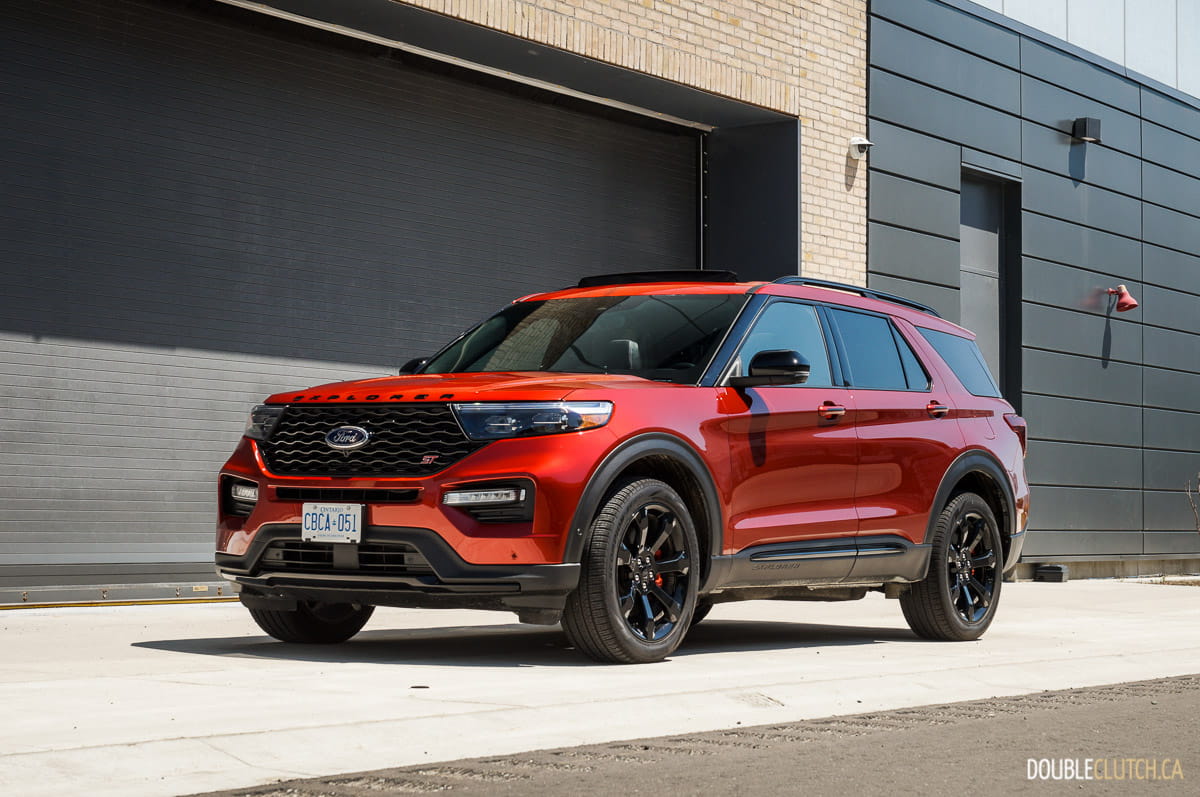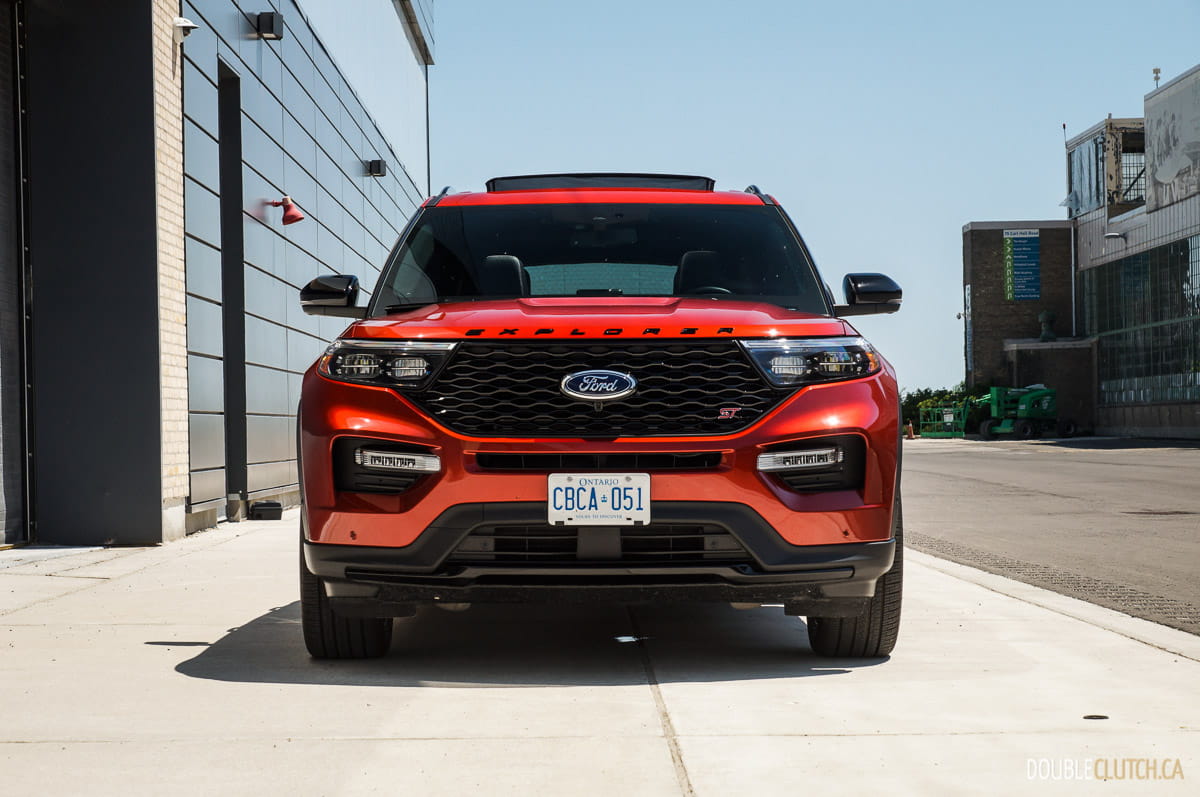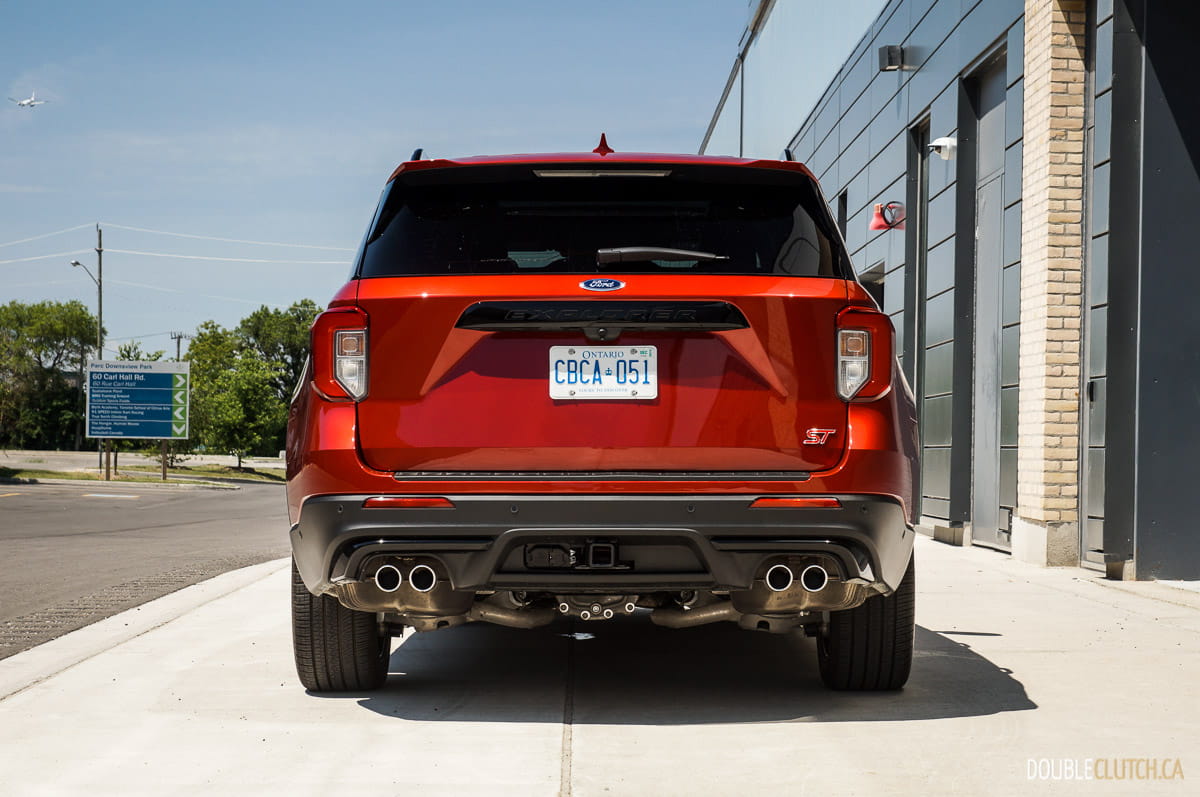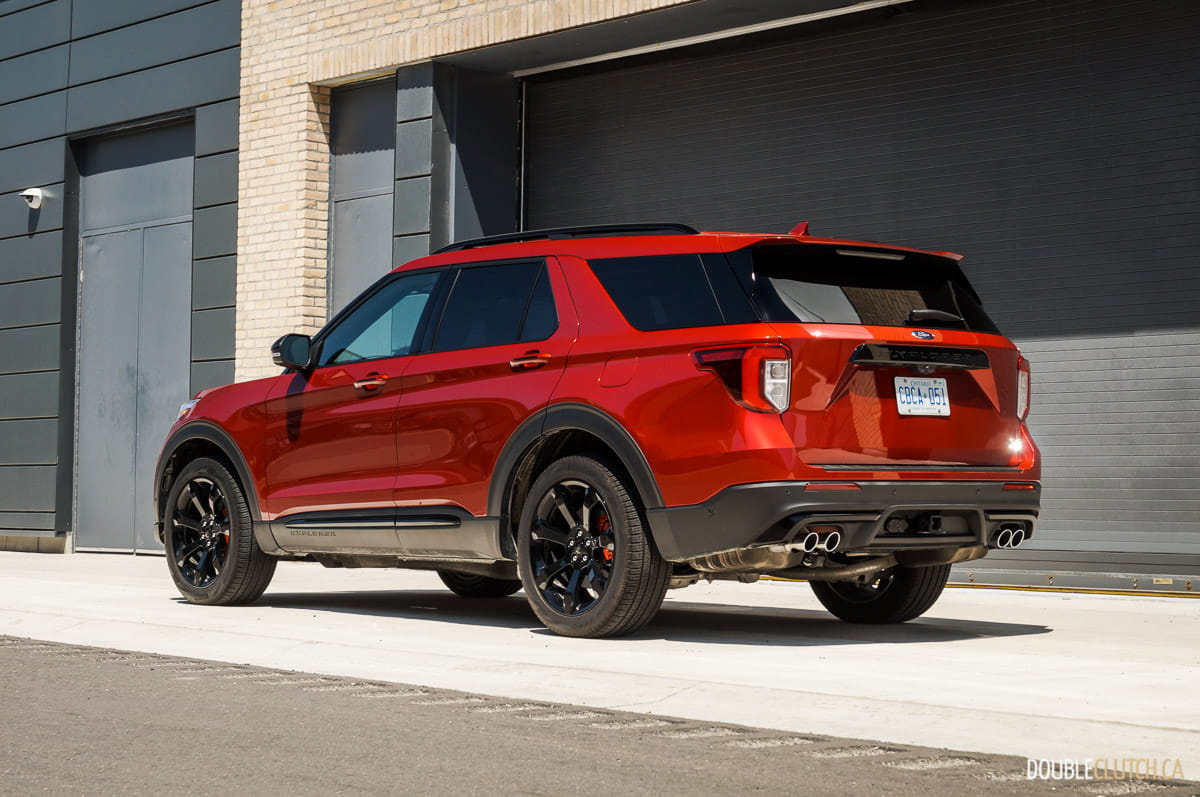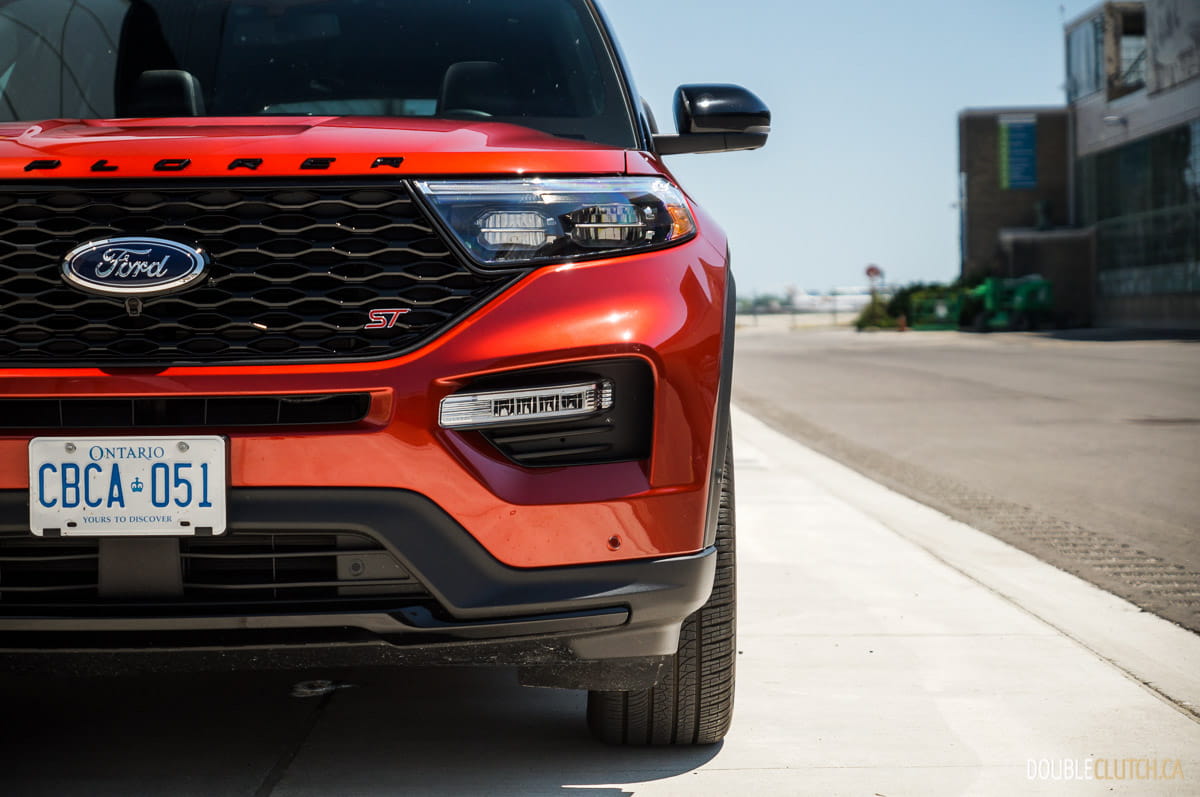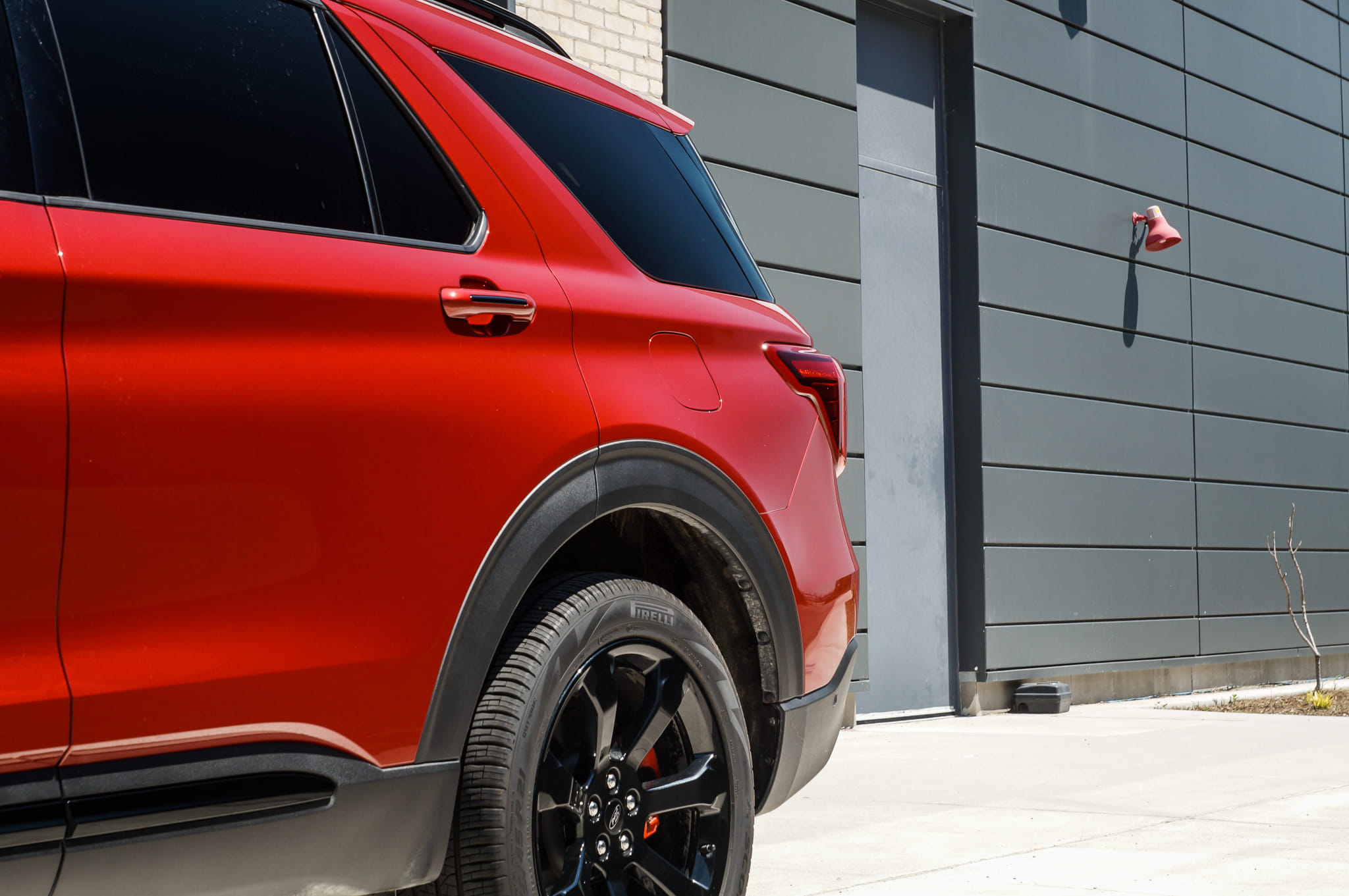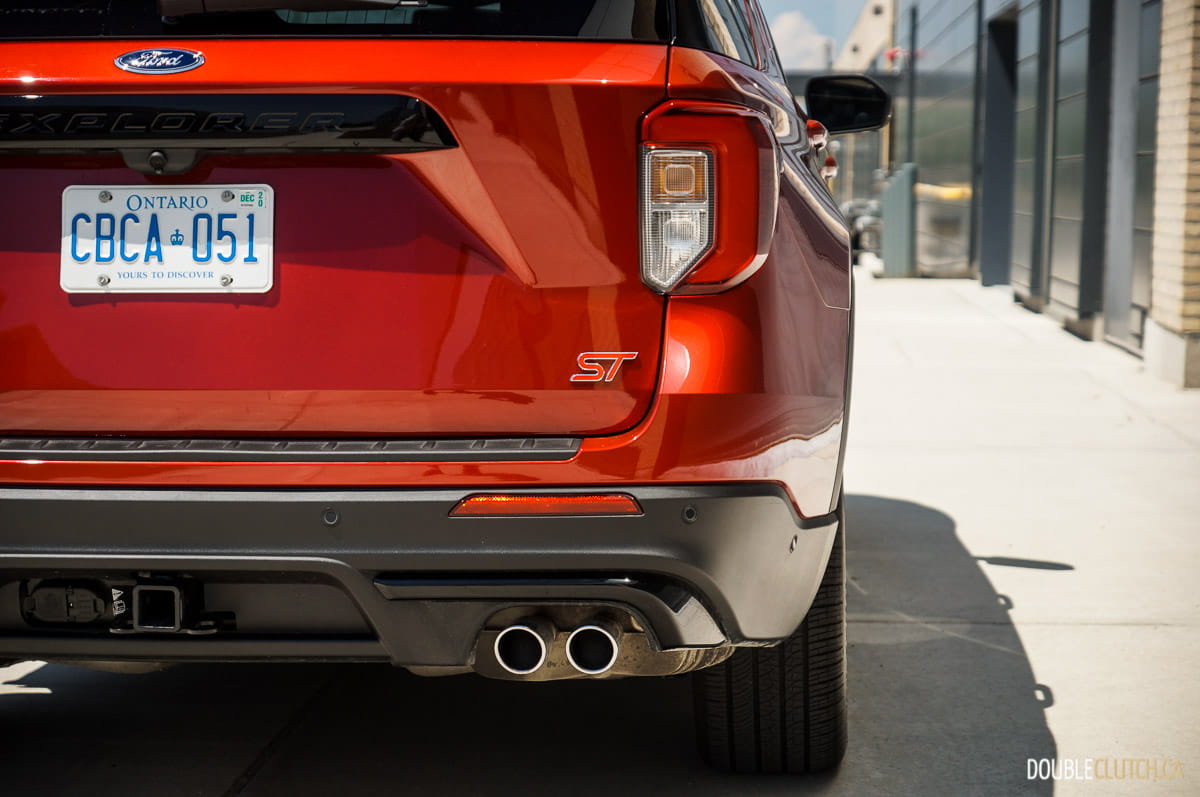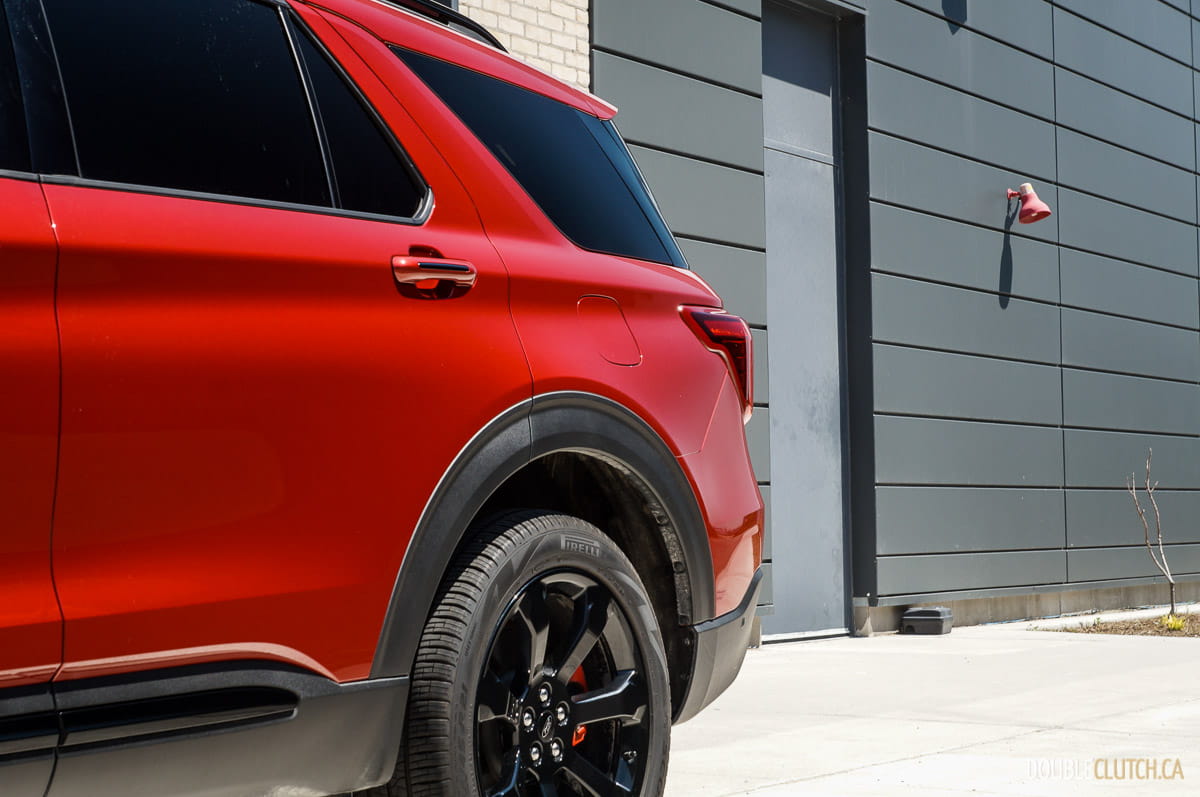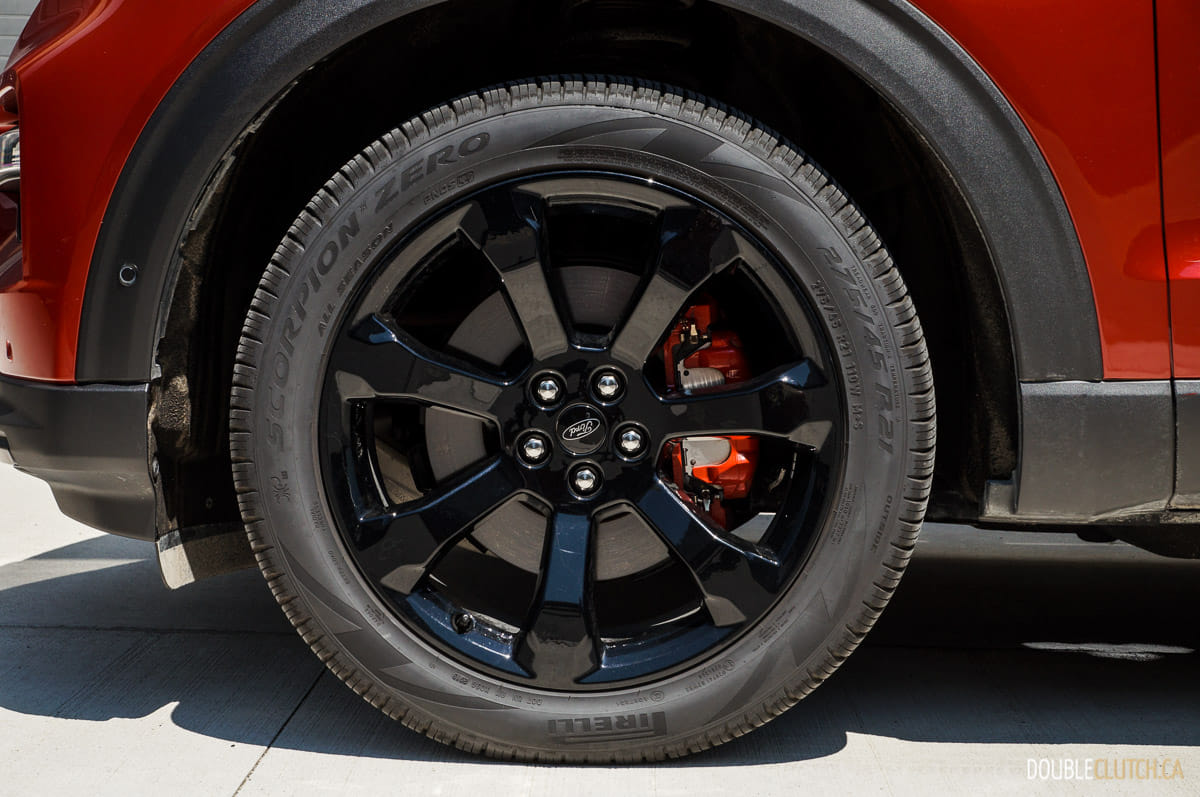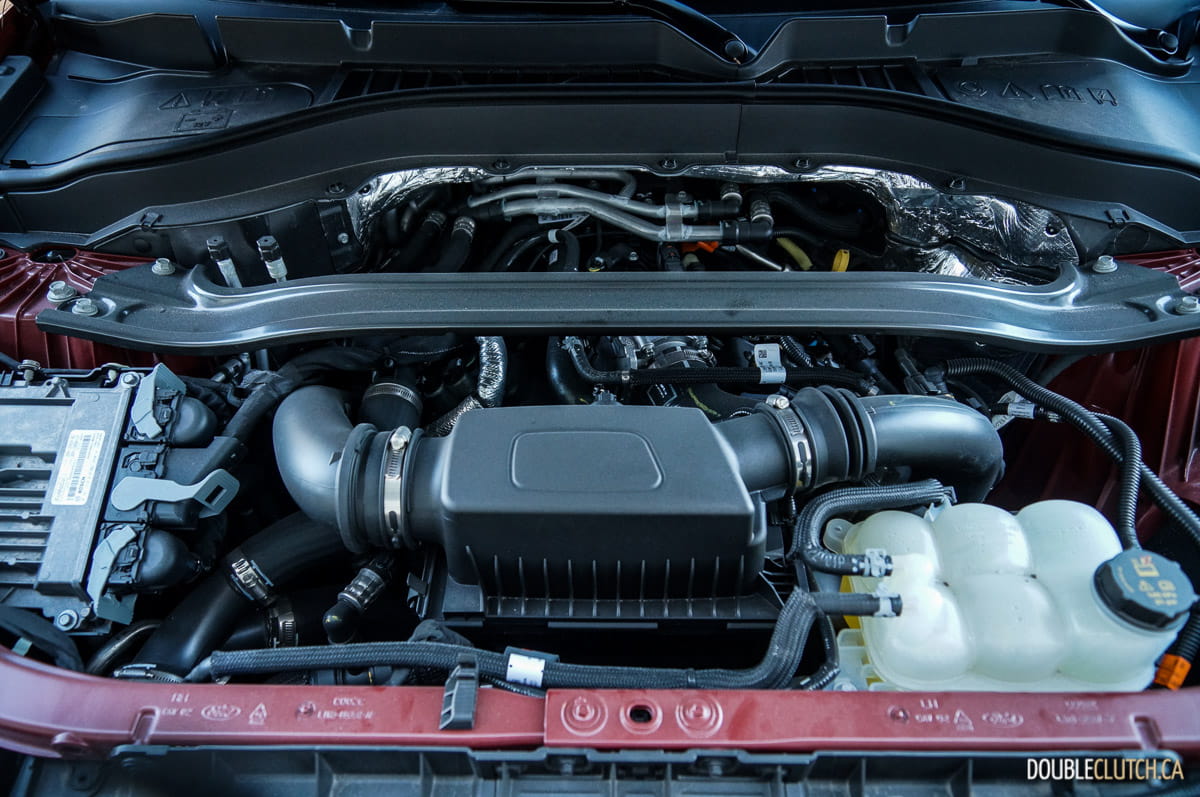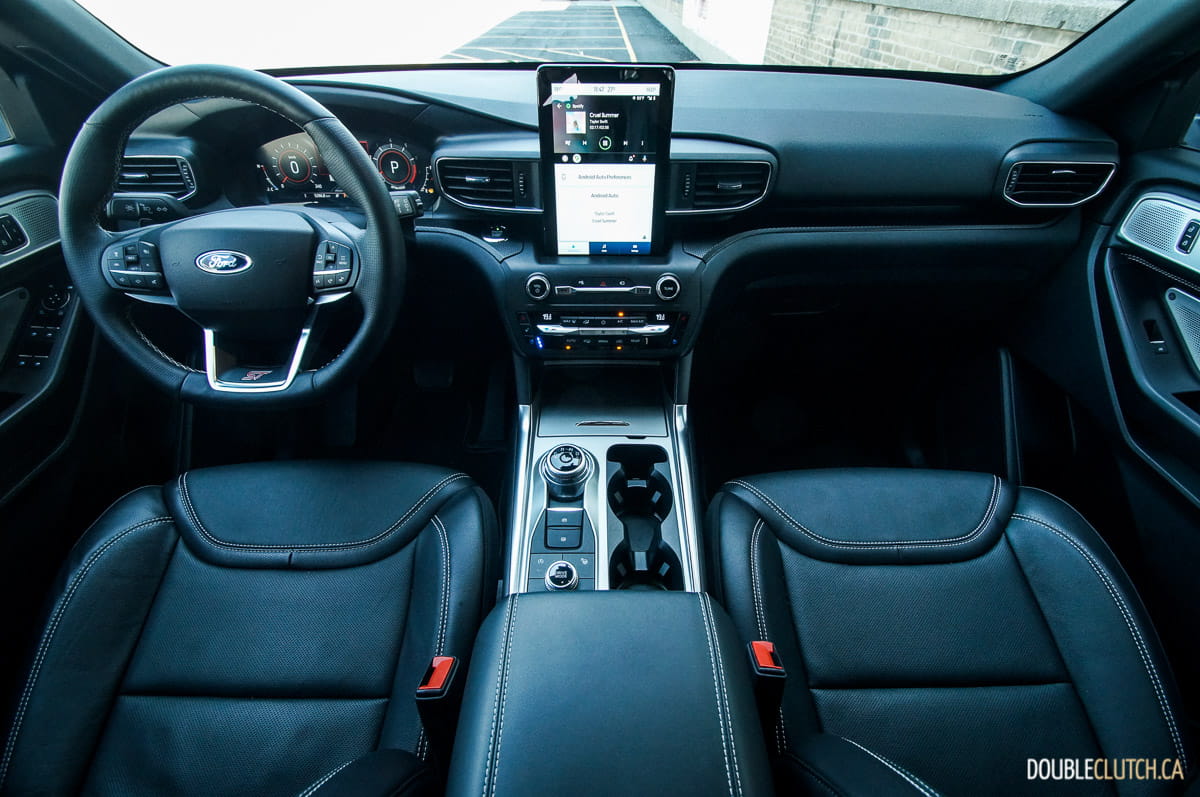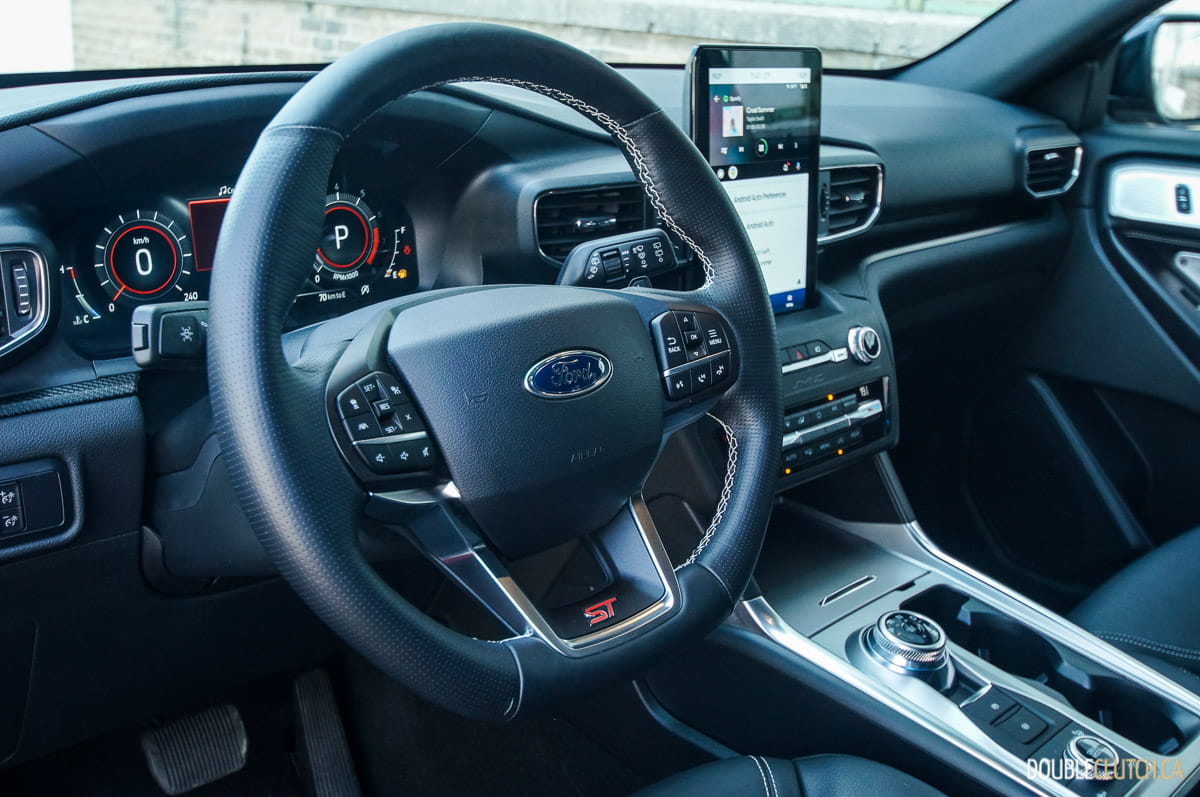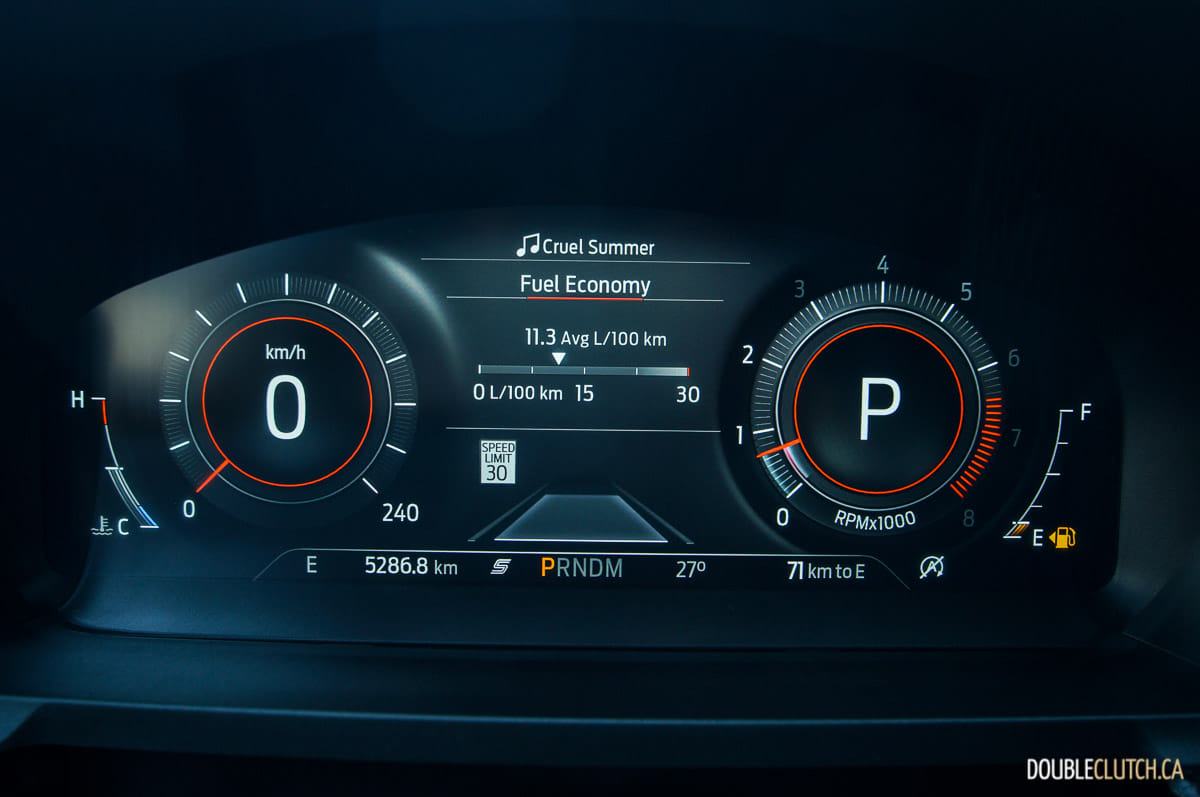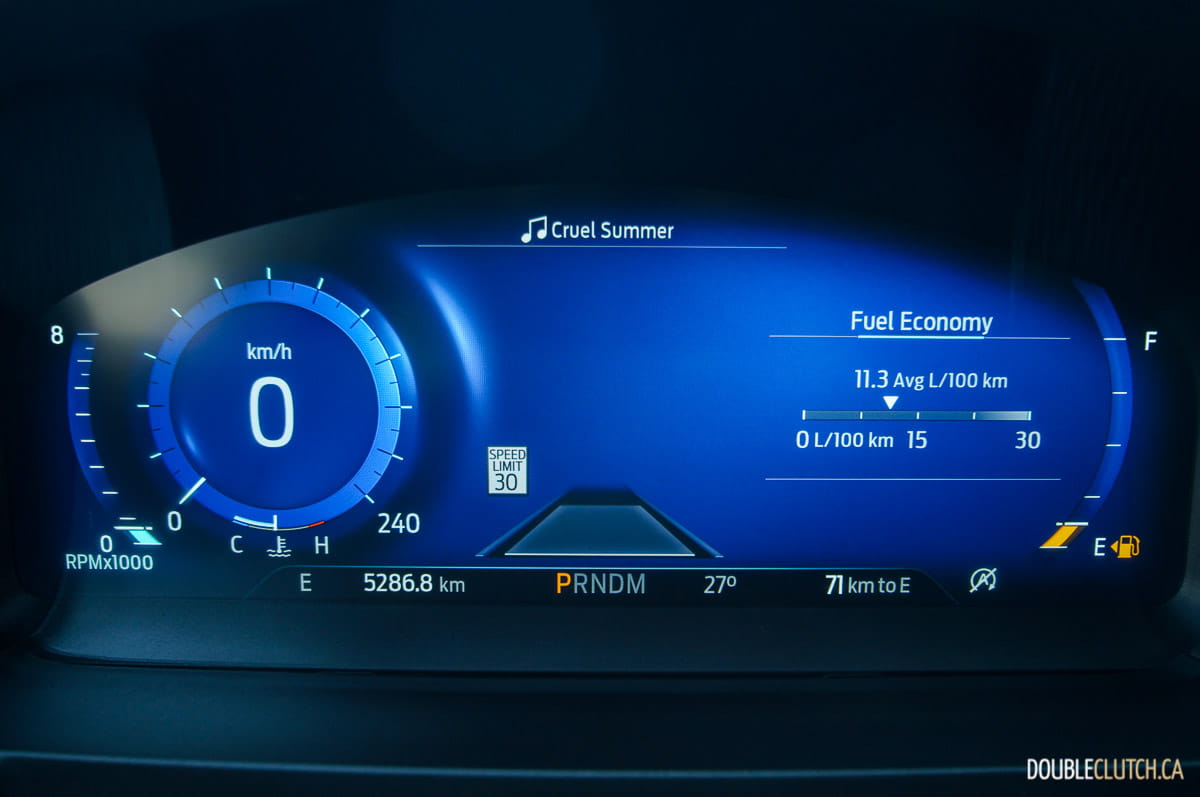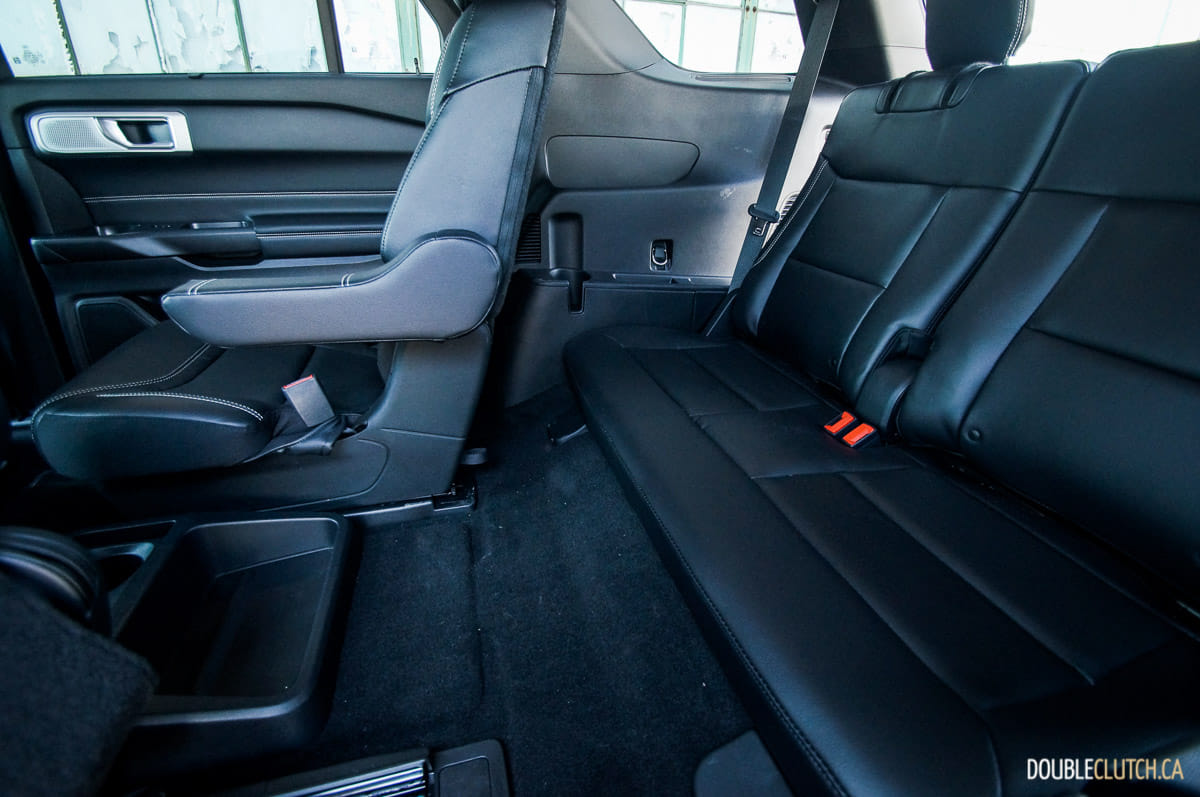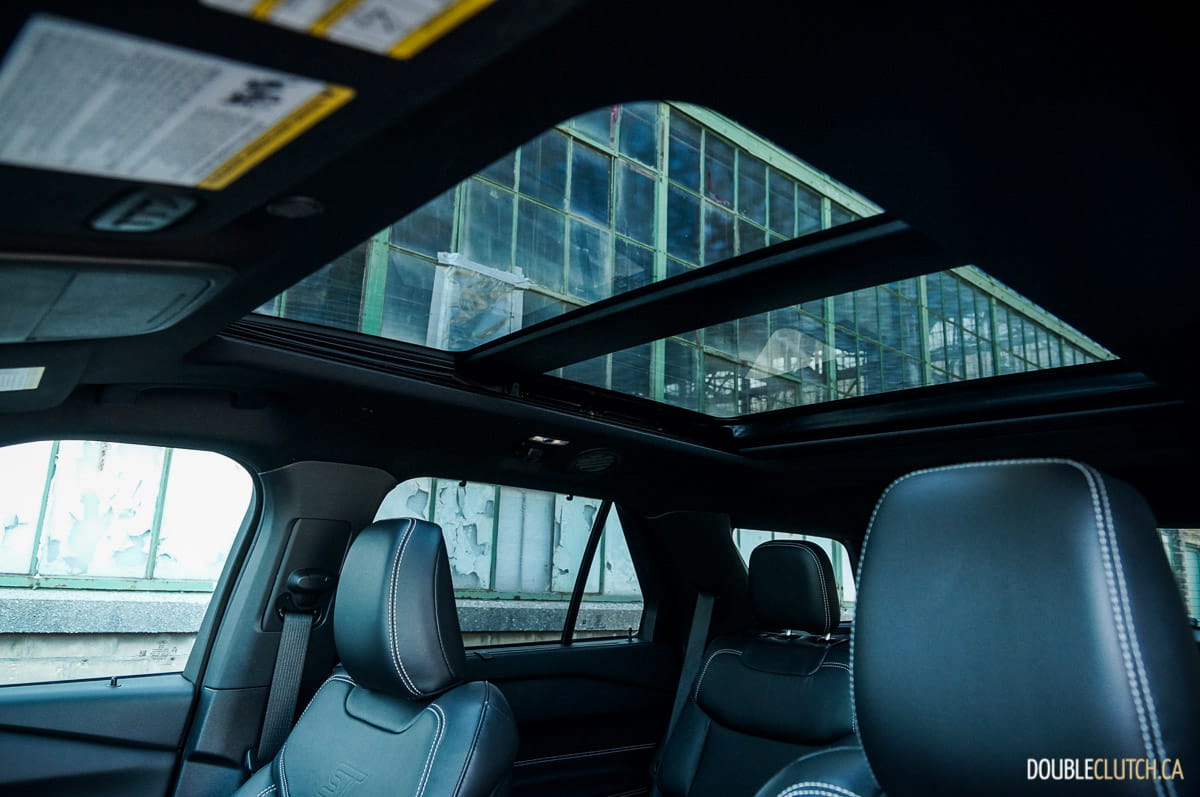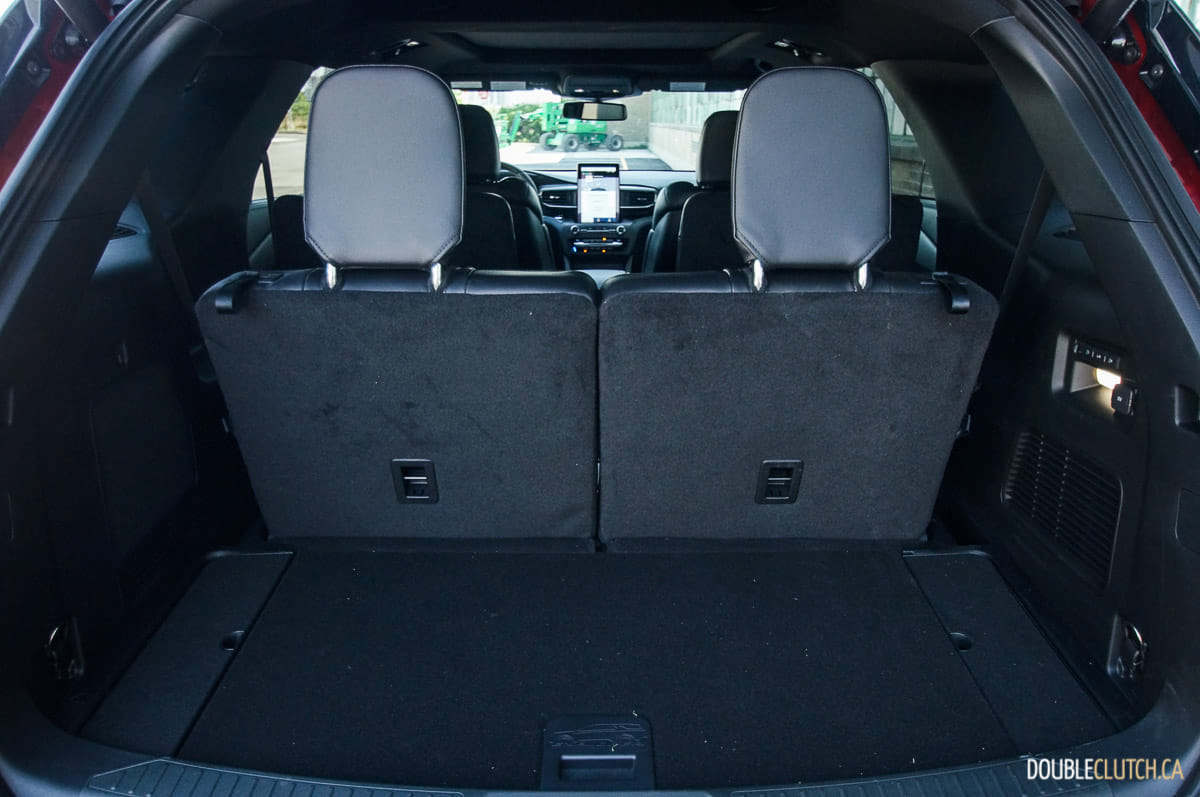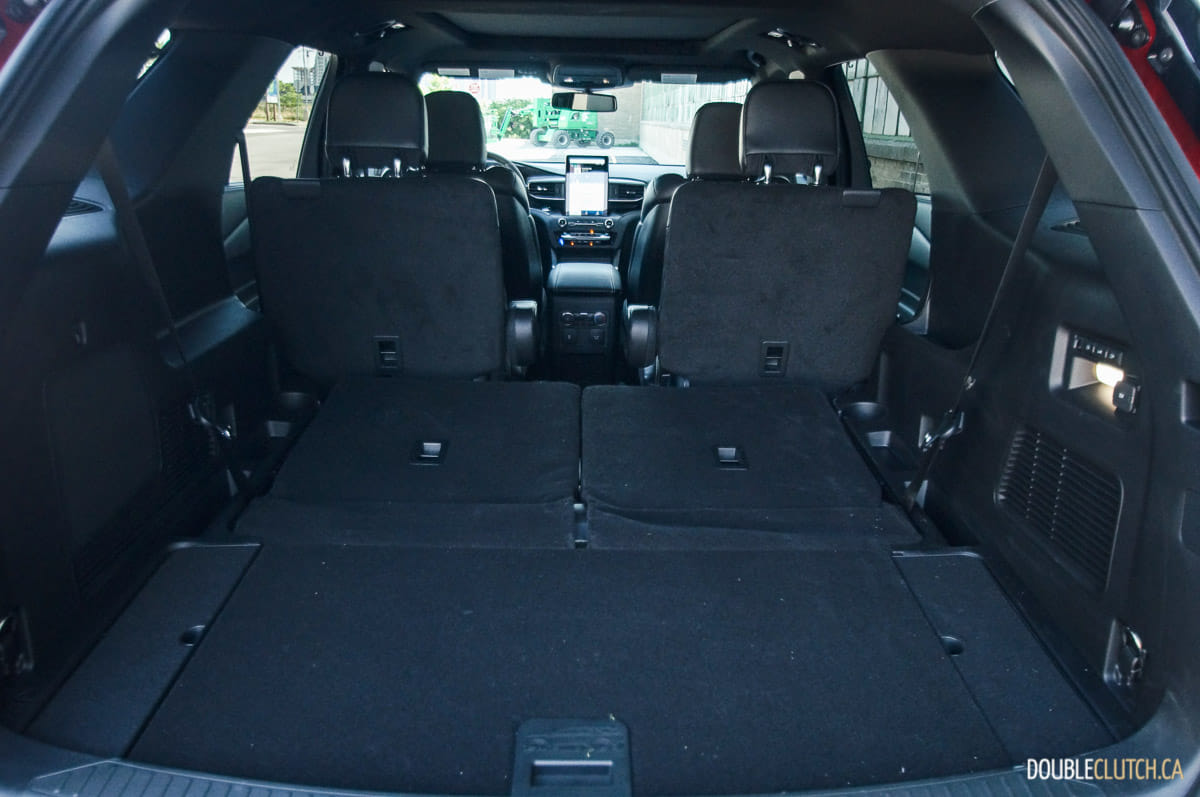With a move back to a rear-wheel drive based “CD6” platform, the 2020 Ford Explorer ST comes back from nearly a decade on the front-drive Ford D3/D4 platform (shared with other dearly departed products such as the Taurus, Flex, and Lincoln MKS). Since the nameplate’s inception for the 1991 model year, it’s always been known as a rugged looking, practical sport utility vehicle. While it has certainly changed with the times – moving to become more of a crossover than anything – today’s all-new Explorer has a significantly stretched wheelbase (165 millimetres or 6.5 inches) and only slightly increased length (44 millimetres or 1.7 inches).
This translates into much better packaging efficiency inside, as well as exterior proportions that increase the badass factor by tenfold. With the new ST model replacing the former Sport model, Ford is also touting their latest effort as the sportiest Explorer yet. Given that sport utilities have inherently disadvantageous ride height (centre of gravity) and handling to contend with, it’s hard to imagine that any Explorer could hold a candle to discontinued hot hatch legends such as the Fiesta ST and Focus ST. With the keys to a snazzy painted Rapid Red ST, the DoubleClutch.ca Magazine team sought to find out.
The basest of base Explorers start with the $45,299 XLT, but in order to get into the ST game, buyers will have to fork over $59,099 and up. The ST’s standard interior features include tri-zone automatic climate control with rear auxiliary control, an auto-dimming rear view mirror, second-row door sunshades, wireless phone charging, a power tilt and telescoping steering column, a remote starting system, Bang & Olufsen premium audio, leather seating with the first two rows as heated, a heated steering wheel, and power folding third row seats. Outside, there are LED head and tail lamps, quad exhaust tips, a hands-free foot-activated power tailgate, rain sensing wipers, and 20-inch alloy wheels.
Options equipped on the Ford Canada test car included the $1,500 ST Street Package, which ups the wheel size to 21-inches and adds upgraded brakes with red calipers. It also had the $1,500 Premium Technology Package, which consists of massage front seats, a 10.1-inch portrait orientation infotainment central touch screen, and ups the B&O audio system from 12 to 14 speakers. With the Rapid Red paint also adding an extra $450, the manufacturer’s suggested retail price came out to $64,299 before taxes and fees.
While the XLT and Limited trims of Explorer make do with a 2.3-litre turbocharged four cylinder engine, the ST (and up-level Platinum) get an all-aluminum 3.0-litre twin-turbocharged V6. The ST gets the most power of the bunch, with 400 horsepower at 5,500RPM and 415 lb-ft. of torque at 3,500RPM (both figures are 35 greater than with the Platinum, respectively). Ford is no stranger to turbocharging, and they’ve come out with plenty of models in the last decade that use this technology. While the Explorer is generally peppy and can get up to speed in a pretty good hurry, it doesn’t quite feel like 400 horsepower and 415 lb-ft. of torque. A lot of this has to do with the Explorer ST’s 2,022 kilogram (4,458 pound) curb weight and large size, which dull down both perceived and actual performance somewhat.
All engines and trims of Explorer get Ford’s standard-issue ten-speed automatic transmission, which is a joint venture design between Ford and General Motors. While it’s no ZF 8HP eight-speed automatic (think Dodge Durango and Jeep Grand Cherokee SRT, as well as countless European SUVs from BMW, Jaguar Land Rover, and Audi), the extra ratios do help with performance. That said, gear hunting is a bit of a problem, and light loading means that some gears are skipped altogether. It’s a transmission that looks pretty great on paper, but could use more refinement.
Government fuel economy ratings for the 2020 Explorer ST are quoted at 13.3L/100KM city and 9.8L/100KM highway. With mostly highway driving, observed economy came back at 11.6L/100KM, which is not all that bad considering the power output. While these ratings are given with regular 87 octane fuel, prospective buyers should keep in mind that maximum power output can only be achieved on premium 91 octane or better. Fuel capacity is 67.7 litres.
Not all that long ago, the Ford Fiesta ST and Focus ST were one of the most pure ways to get into a driving enthusiast’s car. With Ford moving away from cars and leaning in to trucks and SUVs, the smaller cars have fallen by the wayside and the Explorer ST is here to stay. Relatively speaking, it’s about as sure footed as an SUV tends to get, but it’s still very much possible to feel the sheer size and mass of the Explorer when dive-bombing into off ramps and curves.
It’s expected that the next generation Mustang will be built on the CD6 platform as well, and it’s almost as if Ford wanted to share development dollars by making many parts work for the Explorer ST as well. Despite the curb weight squeaking past 2,000 kilograms, steering feel and overall turn-in behaviour is still surprisingly good, and if you’re willing to try, grip levels are alarmingly high. This is all done with 275/45R21 Pirelli Scorpion Zero All Season tires all around, so owners might be able to squeak out even more performance using a dedicated summer tire. As a performance SUV, ride quality is on the firm side as expected, but settles down well on an open highway.
Inside, the new Explorer is much roomier and a better place to be compared to the previous generation 2019 model. Those who are big and tall will have no problems whatsoever in the first and second rows, and the third row is more than enough for children, or adults for shorter trips. There’s a reasonable amount of cargo space behind the third row, and expands healthily once folded. Nominal cargo capacity behind the first, second, and third rows is 2,487, 1,357, and 516 litres (87.8, 47.9, and 18.2 cubic feet), respectively. The optional massage function on the front seats is much better than past Ford iterations, which used to simply punch the lumbar adjuster into your spine repeatedly. It now is able to poke and prod delicately throughout the back and bottom cushions, reducing fatigue on long drives.
Technologically speaking, the conversation piece in the Explorer ST’s interior is the optional 10.1-inch portrait orientation Sync 3 infotainment screen. On more than several occasions, observers would be asking if it was an iPad (it is not), or if the screen was removable (it is also not). What it is, however, is large and sharp, even if it does stick out like a sore thumb. While the ever-important Android Auto and Apple CarPlay are standard equipment, they maintain a landscape orientation on the screen, and as a result, use up only one third of available vertical real estate. The remaining two-thirds is a plain screen that simply tells you that you’re using Android Auto or Apple CarPlay. A waste!
Thankfully, ergonomics are generally good in the Explorer, after one gets used to the rotary dial shifter. There are plenty of hard buttons for things like volume control, audio tuning, heated or cooled seats, and climate control, which help reduce driver distraction by burying things in a touch screen menu. For a car that pushes past $60,000, however, the plastics used feel a little too low brow – they’re barely acceptable for the $45,299 base XLT. For those who are asked to pay sticker for any trim level of Explorer, this could spell trouble.
Safety-wise, the Explorer ST comes with Ford’s full range of autonomous safety features. This includes a forward collision warning system with automatic braking, a blind spot warming system, lane keeping assist, automatic high beams, adaptive cruise control, evasive steering assist (to avoid obstacle cars ahead), active park assist, and rear cross-traffic alert (with automatic braking).
With its as-tested price in the mid-$60,000 range, there’s one elephant in the room for the 2020 Ford Explorer ST: the Dodge Durango SRT. It starts at only a few thousand more, offers a more powerful fire-breathing 6.4-litre V8, and sounds a million times cooler doing it. The Explorer ST definitely handles better and will get better fuel economy, and so should be considered if that’s your inclination. Even so, its cheap feeling interior doesn’t match well with the price point, and if considering non-performance models, the Explorer will find itself outgunned by cheaper models such as the Kia Telluride, Toyota Highlander, or Mazda CX-9. Overall, the ST one of the most fun to drive in this segment, and is lightyears ahead of its Edge ST cousin – it’s just not the best complete package out there.








